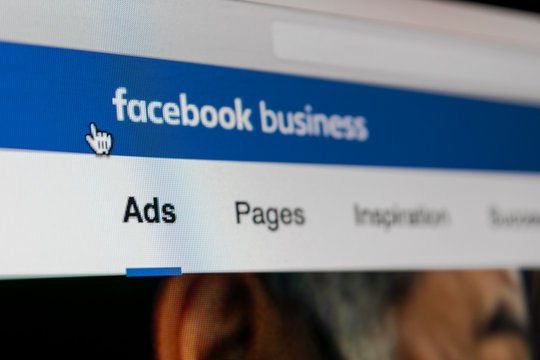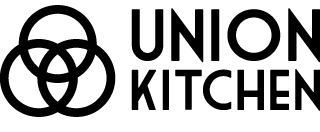ROI on Facebook Ads

Connecting with Your Core Consumer Through Facebook Ads
People are on their phones and computers all the time, and you can use this to your company’s advantage with your digital marketing strategy. Digital marketing is the online promotion of your brand to connect with your core consumer, or the person that most acutely faces the pain point you’ve designed your product to solve. Digital marketing can be a powerful tool to help you build your successful food business by helping you reach the people most likely to buy your product.
Running paid ads on Facebook is one way to use digital marketing to grow your business. But when you’re spending money on Facebook ads, how can you measure your return on investment (ROI) to make sure the cost is justified? In this guide, we will cover the best ways to track Facebook ROI so that you can decide if it is worth the ad spend that you are putting in, and make the right call for your business.
Targeting the Right Audience
Digital marketing gives you more control over who is seeing your content, and thus increases the chance that you will reach your core consumer. Social media, one tool used in digital marketing, allows you to reach a higher quantity of higher quality prospects. Additionally, social media is less expensive and more effective than traditional forms of marketing and advertising. This guide will focus specifically on Facebook paid ads.
Organic social posts are posted for free on your Facebook page and will be seen by people who already follow your company. As more people engage with and share the post, more people will see it. This is a great way to reach existing customers. But, with 2 billion monthly active users on Facebook, there is a lot of content being posted on the site, and your organic posts can get lost easily.
Paid ads, or sponsored advertisements that you’re paying Facebook to promote, guarantee that your brand will be seen because they get bumped higher in people’s news feeds and are displayed in places other than the news feed entirely, such as the right hand column of your browser, Facebook search results, or Facebook stories. Because Facebook allows you to target people by demographic, location, interest, network, and behavior, you can ensure that the right people are getting their eyes on your ads, no matter the placement.
To reach the right people, though, you need to first conduct the necessary research to identify your buyer personas and fine-tune your strategy over time to reach the prospects most likely to buy your product. For example, let’s say your core consumer is a woman in her mid-twenties who is college-educated, active, and health conscious. When setting up your paid ads, you would use that information to target the Facebook users most likely to buy your product. As your ads run, you will start to get data on how your ad is performing. This will indicate if your idea of your core consumer is accurate and if you have reached them effectively.
Analyzing the Data
Monitoring the performance of your ads allows you to evaluate how successful your ads have been in generating engagement and leads and in reaching your core consumer effectively. Using this information, you can decide if your ad is performing well enough or if you need to make any adjustments, such as changing the target audience or switching up the copy or visuals. Paid Facebook ads are incredibly useful because you can track the data on how your ads are performing using Facebook’s analytics tools.
To view your ad campaign performance, open your Facebook Ad Manager to view reach, demographic breakdown, and the cost of your ads over any given period of time. Using the Ad Manager, you can decide which of these performance metrics matter the most to you and save those preferences for the future.
Some metrics that are useful in calculating ROI are connections, ad spend, clicks, and cost per click.
- Connection: a person who has already engaged with your page or content
- Ad spend: how much money you’re spending on your ad
- Clicks: the number of times that your ad is clicked on
- Cost per click: ad spend divided by the number of clicks, therefore the amount of money each click is costing you
Having access to these metrics can help you calculate cost per connection, a key metric in determining ROI. Knowing the cost per connection will help you understand how much money you are spending on each person who interacts with your page, and if those connections are converting into sales. This is necessary information to start determining which campaigns are worth the ad spend and which ones are not.
You can tell if your ads are converting to sales if they hit your landing page. You can also learn more about your individual leads by customizing your landing pages, or the page of your website that is hyperlinked in your Facebook ad. When someone clicks on your ad, you get to choose the link that the Facebook ad will direct them to. The website they are taken to is called the landing page. You can integrate the landing page with analytics software to track the date, event trigger, lead source, contact information, lead quality, and sales details for each lead. That way, you will have access to all the information you need to evaluate your leads and how much each one is costing you.
Determining ROI
After seeing which campaigns are generating more leads and sales, you can see your ROI for each new sale. Moving forward, access the necessary data, including cost and performance, to monitor your ads. Then, use what you have learned from your campaign when working toward the next ad campaign to make it even more successful.
Thanks to this readily available data, you can easily measure ROI to make an informed decision about your paid Facebook ads and whether they are worth your ad spend. Check-in regularly to keep up with the data and ensure you are getting the highest possible ROI. Facebook and its platforms can be an incredible tool to set your food business up for success. Staying informed about how to maximize their potential will help your business grow!

Comments